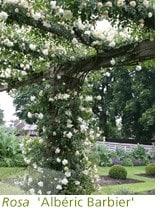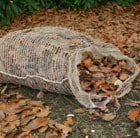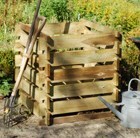|
Knowing your roses will help enormously when choosing what to plant because there are also different habits - from large and branching to neat and compact, from ground cover to upright or climbing. Some roses are more tolerant of poor soil whilst others are much fussier. Many modern roses are very disease resistant too and if you want to be eco-friendly go for these.
Simply Bred Roses for Poorer Soils
 Species roses and simply bred roses tend to be really healthy and more tolerant of poorer soil. However they have a tendency to produce single flowers in late spring and very early summer, so these are more ephemeral than most roses. On the plus side they do set hips that are often greatly appreciated by birds. The stems also tend to be thorny, so they are most useful as free-standing shrubs, or in wilder areas rather than in flower borders. They also make good screens or hedges, which will help deter unwanted visitors. Species roses and simply bred roses tend to be really healthy and more tolerant of poorer soil. However they have a tendency to produce single flowers in late spring and very early summer, so these are more ephemeral than most roses. On the plus side they do set hips that are often greatly appreciated by birds. The stems also tend to be thorny, so they are most useful as free-standing shrubs, or in wilder areas rather than in flower borders. They also make good screens or hedges, which will help deter unwanted visitors.
Good species roses include Rosa glauca a grey-leaved shrub rose grown for its dusky foliage, which darkens considerably in drier summers, and flagon-shaped orange-brown hips. The single pink and white flowers do not make much of a contribution, but this a fantastic wildlife plant. In autumn and winter the hips attract lots of garden birds, who breakfast on the hips in November and December. R. glauca is very tolerant of poor soil and the dusky foliage mixes well with silvers that might include artemisia, purple and green sages and lavenders. Seedlings will occur, but friends are always grateful.
The Gallica roses, from dry and warm parts of Southern and Central Europe, are also good on poorer soil. The foliage tends to be matt and grass-green and the habit upright so sometimes these mainly pink roses are used as hedging. In time they can sucker, controllably so, and produce a thicket given time, as they do at Kiftsgate Court in Gloucestershire where the stripy Rosa gallica ‘Versicolor’ has sported (sent out different shoots) to produce all-pink flowers. The mixture of plain and stripy flowers on this low hedge is a delight for visitors and bees alike.

Well-bred gallicas include the dark-purple ‘Tuscany Superb’, which has flat open flowers that display a golden boss of stamens, making it very insect friendly. ‘Charles de Mills’ is a more petal-packed, taffeta-textured rose, which eventually displays a touch of leaf-green in the middle of its port-wine flowers. These mid-19th century roses add depth to paler pinks and just flowering once shouldn’t put you off, for they are both excellent.
 The Alba roses, which have greyer foliage, are also very good on poorer soil. 'Königin von Dänemark’ (Queen of Denmark) is considered the best of all. The quartered flowers open to a soft-pink and it was the rose everyone wanted to grow when it was released in 1830. It’s stood the test of time, flowering just once in July magnificently well. It will also tolerate poorer soil and a poor position too. The Alba roses, which have greyer foliage, are also very good on poorer soil. 'Königin von Dänemark’ (Queen of Denmark) is considered the best of all. The quartered flowers open to a soft-pink and it was the rose everyone wanted to grow when it was released in 1830. It’s stood the test of time, flowering just once in July magnificently well. It will also tolerate poorer soil and a poor position too.
The other group of roses which thrive on poor soil are the Rugosa roses bred from a Japanese species found in sandy soils. Rugosas do not enjoy limey soil,  which sends their foliage yellow, but will do anywhere else on well-drained soil. These roses have wrinkled (or rugose foliage) which is green and rounded. The single or semi-double flowers are highly scented and large hips can follow sometimes. They’re very healthy and the benchmark variety, 'Roseraie de l’Haÿ’, was raised in France in 1901 and named after the famous rose garden where it was found. The fragrant crimson flowers are more petal-packed than most Rugosa roses, so hips do not form very often. However this ample rose will flower in some shade and is best incorporated with other shrubs. The loosely double-white ‘Blanche Double de Coubert’ (often sold as ‘Blanc Double de Coubert') makes an excellent hedge and flowers over a longer period, although there are no hips. Prune lightly every spring, because there is usually some die back after winter. which sends their foliage yellow, but will do anywhere else on well-drained soil. These roses have wrinkled (or rugose foliage) which is green and rounded. The single or semi-double flowers are highly scented and large hips can follow sometimes. They’re very healthy and the benchmark variety, 'Roseraie de l’Haÿ’, was raised in France in 1901 and named after the famous rose garden where it was found. The fragrant crimson flowers are more petal-packed than most Rugosa roses, so hips do not form very often. However this ample rose will flower in some shade and is best incorporated with other shrubs. The loosely double-white ‘Blanche Double de Coubert’ (often sold as ‘Blanc Double de Coubert') makes an excellent hedge and flowers over a longer period, although there are no hips. Prune lightly every spring, because there is usually some die back after winter.

Hybrid Musks were bred in the dry county of Essex, so they do well on thinner soils and in warm positions. They were mostly bred by the keen Rosarian the Reverend Joseph Pemberton. Twenty two were bred in all and eleven are considered really top notch. Although variable in habit, they are all highly scented, and ‘Buff Beauty’ (introduced by Pemberton’s head gardener’s wife in 1937) is a large shrub rose that needs a warm site and time to establish. ‘Buff Beauty’ normally begins to flower in July, after most roses, and then continues until late. The warm buff-apricot flowers are flattered by coppery red foliage but like all Hybrid Musks it must be lightly pruned.
 Rambler roses also tolerate poor soils, being mainly allied to two species R. wichuraiana and R. multiflora. Most only flower once, but they do it magnanimously. Add a viticella clematis, such as ‘Étoile Violette, and allow it to scramble through to provide late-summer flower. Habits vary from modest to rampant and the new growth is often vigorous so the usual method is to tie the new shoots in before Christmas whilst cutting out some of the older wood. All take time to settle in. ’Paul’s Himalayan Musk’ bears clusters of pale pink flowers in late June but it will easily scale a mature tree, cascading down the other side in sheets of flower, so it’s not for a small space. The all-white ‘Rambling Rector’ needs space also. The lemon-white ‘Albéric Barbier’ is a rambler of moderate vigour, with a charming habit of throwing out late flowers. The compact ‘Phyllis Bide’ bears clusters of sweetly scented salmon-pink flowers, although this is very thorny so site it carefully! Rambler roses also tolerate poor soils, being mainly allied to two species R. wichuraiana and R. multiflora. Most only flower once, but they do it magnanimously. Add a viticella clematis, such as ‘Étoile Violette, and allow it to scramble through to provide late-summer flower. Habits vary from modest to rampant and the new growth is often vigorous so the usual method is to tie the new shoots in before Christmas whilst cutting out some of the older wood. All take time to settle in. ’Paul’s Himalayan Musk’ bears clusters of pale pink flowers in late June but it will easily scale a mature tree, cascading down the other side in sheets of flower, so it’s not for a small space. The all-white ‘Rambling Rector’ needs space also. The lemon-white ‘Albéric Barbier’ is a rambler of moderate vigour, with a charming habit of throwing out late flowers. The compact ‘Phyllis Bide’ bears clusters of sweetly scented salmon-pink flowers, although this is very thorny so site it carefully!

Perhaps the best rose for impoverished soil is the lightly fragrant pink shrub rose ‘Bonica’, bred in France by Meilland in 1981. It’s hardly ever out of flower and is a manageable size, up to four feet (1.2m) at most. Each cluster can have as many twenty flowers and it’s very healthy.
Repeat-Flowering Old-Fashioned
Roses
for Better Soil
 China roses such as 'Mutabilis', tend to flower over a long period so rose breeders hybridised once and only roses with the Chinas in order to lengthen bloom time. However many of these roses were not strong or disease resistant. Time has sorted out the survivors, but most old-fashioned repeat-flowering roses need good growing conditions to do well. China roses such as 'Mutabilis', tend to flower over a long period so rose breeders hybridised once and only roses with the Chinas in order to lengthen bloom time. However many of these roses were not strong or disease resistant. Time has sorted out the survivors, but most old-fashioned repeat-flowering roses need good growing conditions to do well.
Bourbon Roses also contain some stunners and the most scented rose of all, 'Madame Isaac Pereire’ (1880) is a prime example. Often trained as a short climber, although it will also do well at the back of a border, it bears huge pink flowers. By September these become the size of saucers and the David Austin English rose ‘Constance Spry’ is equally voluptuous. ‘Reine Victoria’ (1872), also a pink Bourbon, is far less generous in size but particularly good to cut and flower arrangers love it for its delicate charms.

The upright ‘Ferdinand Pichard’ (1921) is the best repeat-flowering multi-coloured rose with cupped flowers consisting of crimson and pink splashes, dots and stripes. Hardly ever out of flower. It is an essential for any rose border because it plugs the gaps between flushes and blends with every other rose in that spectrum of old-rose colours.
Modern Roses
 Hybrid teas are not as popular as they were and many have succumbed to disease. However modern breeders have produced some excellent healthy varieties. Rosa Sunny Sky has been bred by Kordes, a German rose company that led the way when it came to raising bomb-proof roses that could perform without any risk of disease. Voted Rose of the Year 2016 ‘Sunny Sky’ produces soft yellow flowers that have a light, fruity scent. It will reach four feet (1.2m) in height and the foliage is gloriously glossy. Like all hybrid teas it is an excellent rose for cutting, with honey-yellow, scroll-shaped buds on strong stems. Hybrid teas are not as popular as they were and many have succumbed to disease. However modern breeders have produced some excellent healthy varieties. Rosa Sunny Sky has been bred by Kordes, a German rose company that led the way when it came to raising bomb-proof roses that could perform without any risk of disease. Voted Rose of the Year 2016 ‘Sunny Sky’ produces soft yellow flowers that have a light, fruity scent. It will reach four feet (1.2m) in height and the foliage is gloriously glossy. Like all hybrid teas it is an excellent rose for cutting, with honey-yellow, scroll-shaped buds on strong stems.
Floribunda roses are compact and bear clusters of roses so they are easily combined in the flower border. Among the best is the warm white ‘Margaret Merril’, a rose much admired for cutting. Bred by Harkness it is often specially grown for weddings due to its creamy colour and blush-pink middle. When fully open the stamens add a delicate air.

Finally the modern ground cover roses in the County Series are fabulous in front of other roses, or on a prominent corner, or sloping bank. ‘Surrey’, bred by Kordes, bears clusters of small cupped pale pink roses from July until September. The petals have a raggedy edge, adding much to the flowers which cover the low bush.
|






























